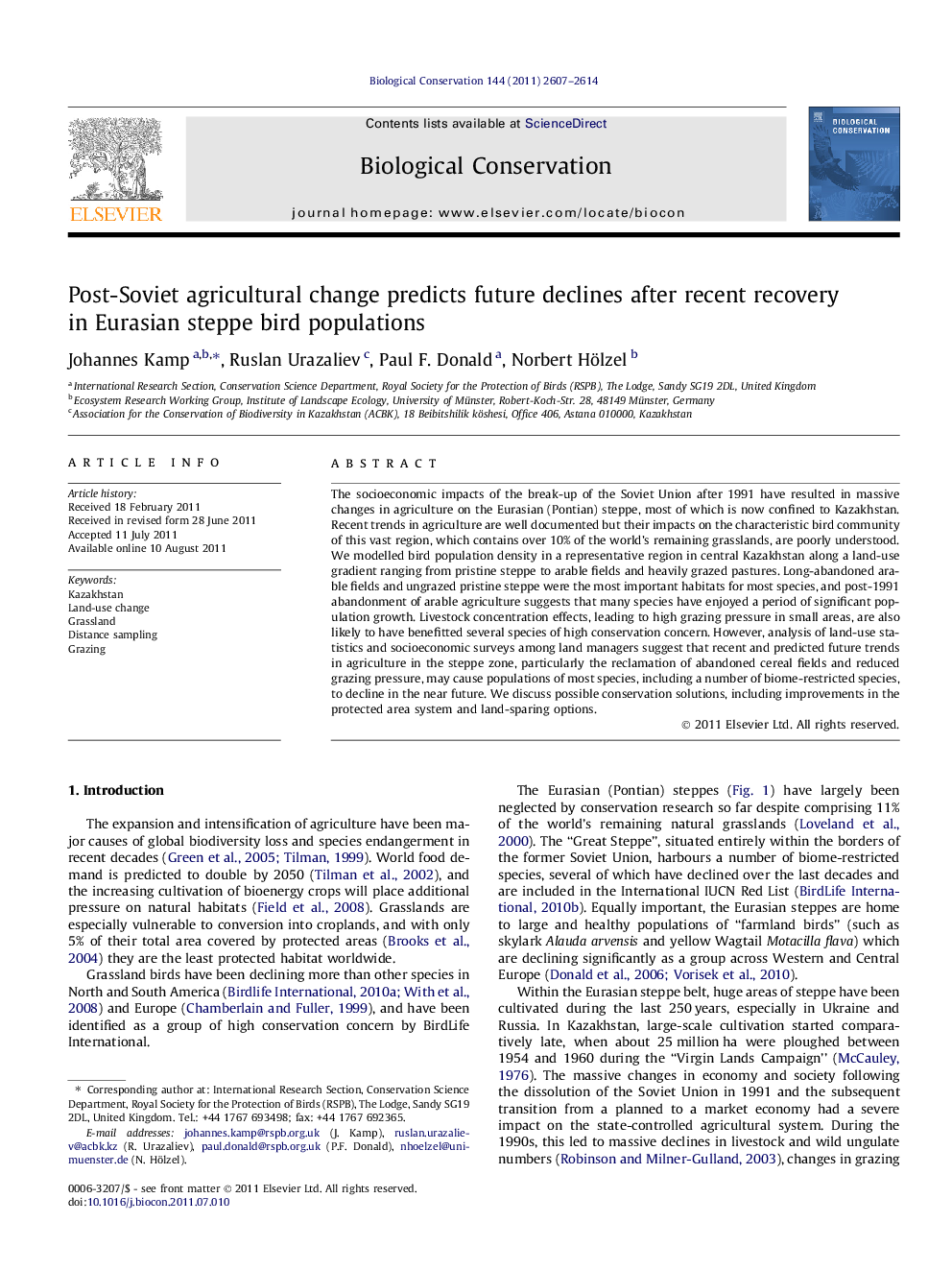| Article ID | Journal | Published Year | Pages | File Type |
|---|---|---|---|---|
| 4385386 | Biological Conservation | 2011 | 8 Pages |
The socioeconomic impacts of the break-up of the Soviet Union after 1991 have resulted in massive changes in agriculture on the Eurasian (Pontian) steppe, most of which is now confined to Kazakhstan. Recent trends in agriculture are well documented but their impacts on the characteristic bird community of this vast region, which contains over 10% of the world’s remaining grasslands, are poorly understood. We modelled bird population density in a representative region in central Kazakhstan along a land-use gradient ranging from pristine steppe to arable fields and heavily grazed pastures. Long-abandoned arable fields and ungrazed pristine steppe were the most important habitats for most species, and post-1991 abandonment of arable agriculture suggests that many species have enjoyed a period of significant population growth. Livestock concentration effects, leading to high grazing pressure in small areas, are also likely to have benefitted several species of high conservation concern. However, analysis of land-use statistics and socioeconomic surveys among land managers suggest that recent and predicted future trends in agriculture in the steppe zone, particularly the reclamation of abandoned cereal fields and reduced grazing pressure, may cause populations of most species, including a number of biome-restricted species, to decline in the near future. We discuss possible conservation solutions, including improvements in the protected area system and land-sparing options.
► Changes in agriculture after the break-up of the Soviet Union were largely beneficial for bird populations of the Eurasian steppes. ► Future reclamation of abandoned arable land and changing grazing patterns are predicted to lead to new habitat loss. ► Possible conservation solutions might include improvements to the protected area system in Kazakhstan and land-sparing approaches.
